You can’t have the full Moroccan cuisine experience without indulging in some of the country’s most famous and tastiest street food.
Morocco’s cuisine is rich with diverse and delicious traditional foods that you will find in each Moroccan house, restaurant, and of course the streets of the North African kingdom.
The country’s culinary offerings vary from grilled meat and delicious soups to light snacks and fried fish to tasty pastries and incredible juices.
You can find all of these delicacies in five-star restaurants. However, if you want to have an authentic and one-of-a-kind experience then you should look for them in the traditional streets or souks (markets) of Morocco.
Posh Moroccan restaurants are a pleasure to visit, but trying Morocco’s different street foods will give you the full Moroccan experience and make for remarkable memories during your travel. You might even end up finding your favorite Moroccan dish from an outdoor vendor.
You can find some of the best Moroccan street food in almost all of Morocco’s old medinas, from Marrakesh’s vast open-air restaurant of Jemaa El-Fna to Fez’ narrow car-free ancient medina streets.
These are some of the best Moroccan street foods that you must try during your travel to Morocco.
Sfenj
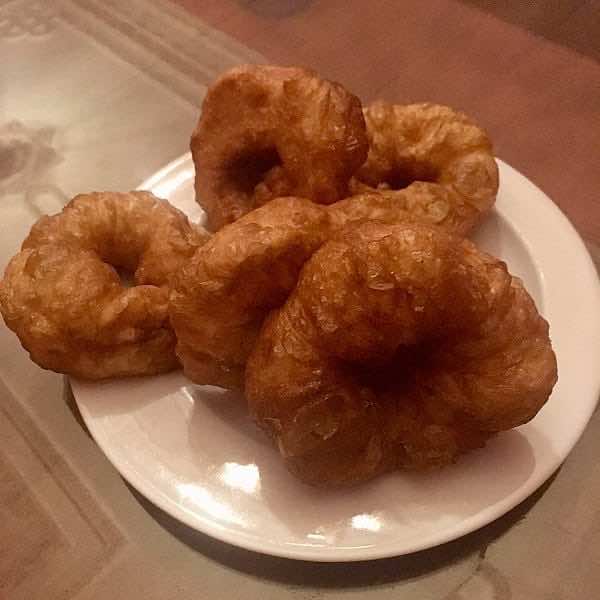
Sfenj are Moroccan doughnuts, just a tad fluffier and lighter than what a Westerner might know. The pastry is made with dough, shaped into rings, and then fried in hot oil until it takes on a golden color.
Moroccans grow accustomed to sfenj starting in early childhood either in the morning before school starts or in the late afternoon after classes end.
The light snack is beloved because Moroccans associate it with exciting and sweet nostalgic memories.
The delicious sweet food is served hot with a sprinkle of sugar, usually with a cup of mint tea, and you can find it in almost all bakeries in the Moroccan streets or traditional markets.
Babouche (Snail soup)
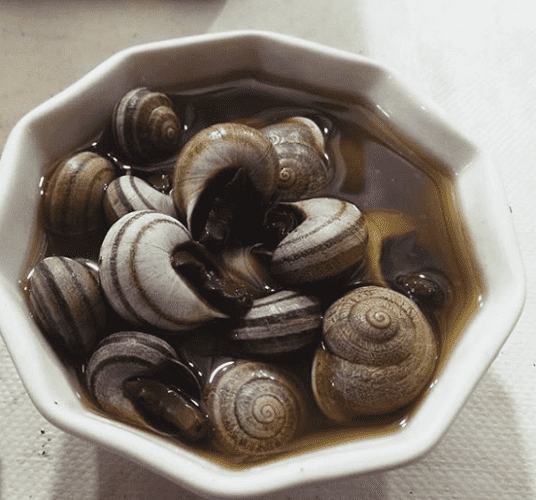
Another favorite street food in Morocco is babouche, which is Darija (Moroccan Arabic) for snails. It might seem bizarre to eat cooked snails, and you might want to stay far away from the snail soup vendors in Morocco.
However, if you do end up trying this unusual soup, you will find out exactly why many Moroccans, as well as tourists, love to indulge in the hot and spicy dish.
The soup is not only special because its main ingredient is snails, but also because it has some 15 different spices and herbs that give it an exquisite smell and rich flavor.
The spices and herbs in babouche broth include thyme, orange peel, ground mint, chili, anise, green tea leaves, salt, caraway seeds, and others. Moroccans believe that the several herbs in the soup are very healthy, effective against fever, and promote good digestion.
Tayb O’hari
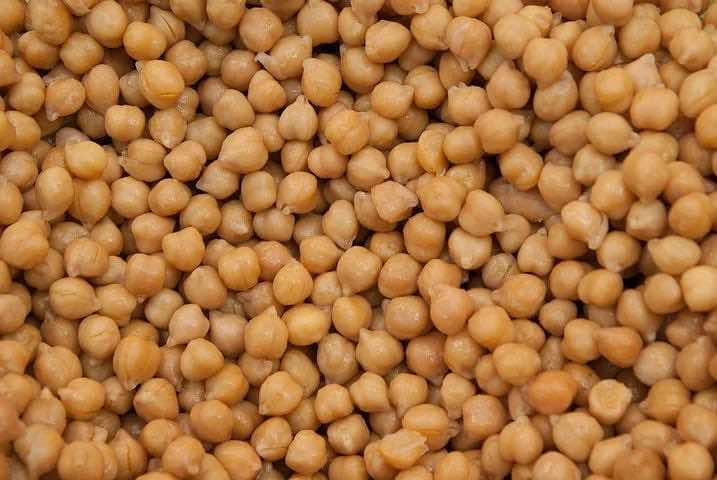
Tayb O’hari is a delicious and healthy snack that everyone should try during their travel to Morocco.
The dish is made with dry chickpeas or fava beans that are left overnight in water to soften up. Then they are boiled until they become completely soft and served hot with salt, cumin, and ground paprika as desired.
This street food is cheap yet rich in value due to the healthy legumes. Chickpeas are also a great light snack because they are filling and help you avoid eating unhealthy processed food.
You will find Tayb O’hari in small food stalls that vendors push to their usual selling point with big cooking pots that have both chickpeas and fava beans. You can ask the vendor to add as much cumin, salt, and paprika as you wish.
Maakouda
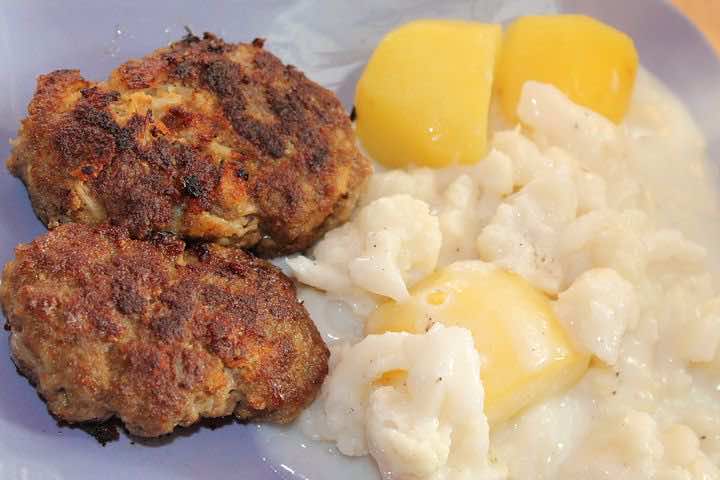
Maakouda are little Moroccan potato cakes and a very popular street food in Morocco. The small cakes are traditionally made with mashed potatoes and eggs, seasoned with onion, butter, garlic, cilantro, ground pepper turmeric, and cumin.
The potatoes are grated, boiled then mixed with the other ingredients, then shaped into little cakes and breaded before fried. Moroccans either have the treat alone, hot and dipped in sauce, as a filling in khobz (Moroccan bread), or as a side dish.
You can find fresh maakouda in most Moroccan bakeries or in small food stalls in medina streets or souks.
Chebakia
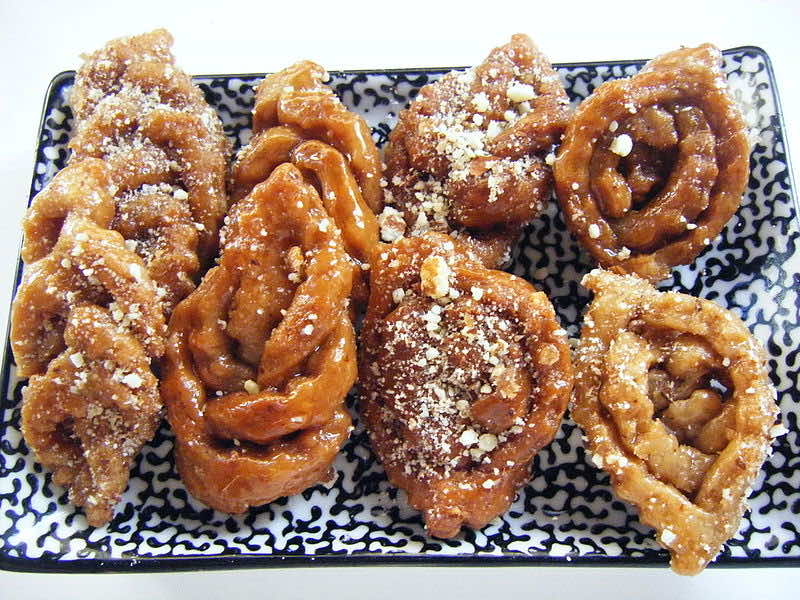
Chebakia is one of the most famous Moroccan foods and is definitely a cookie that anyone who tries adores. The traditional sweet food can be found in the houses of most Moroccans, especially during the month of Ramadan, in restaurants as well, and of course in Morocco’s bustling medina streets.
The delicious sesame cookie might be hard to find as Moroccan women usually require the help of their family, friend, or neighbor to make it, especially when they want to bake a large quantity for Ramadan. However, a bit of a search will be worth it.
The cookie is made with dough, orange flower water, anise, cinnamon, baking powder, olive oil, salt, and sugar. The mix is shaped into a very sophisticated-looking flower, fried until it takes a brownish or gold color, then dipped into honey, and finally sprinkled with sesame seeds.
Msemen and Harsha
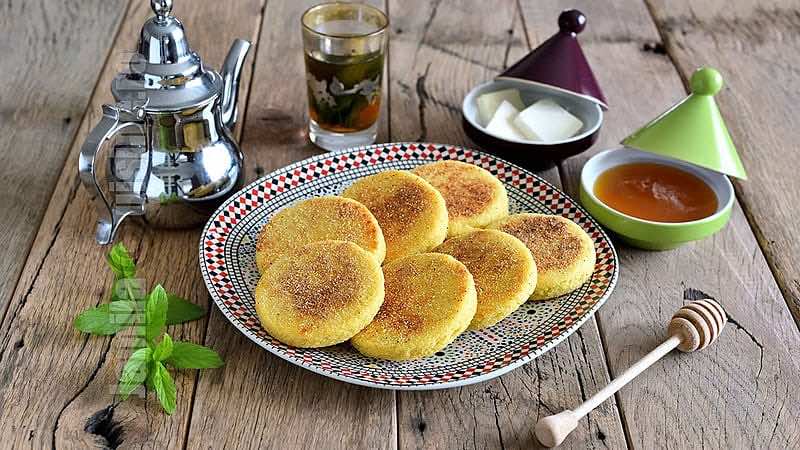
Msemen and Harsha are traditional Moroccan pastries that are delicious and served either during breakfast or the late afternoon as a snack with Moroccan mint tea.
Msemen is composed of thin layers of dough folded into squares and cooked on a griddle. The pastry can come in different shapes and tastes as well: There is plain msemen, and ones filled with kefta (ground meat), onions, and vegetables.
Harsha on the other hand is a type of bread made with semolina and cooked in a hot pan. This pastry might vary from one region to the next or even from one house to another, yet all versions of Harsha are delicious and full of nutrients, especially when cooked using olive oil.
Visiting Morocco, you are bound to indulge in some delicious foods, either in the house of your Moroccan friend or in a local bakery in the streets of the old medina.
Bocadillo
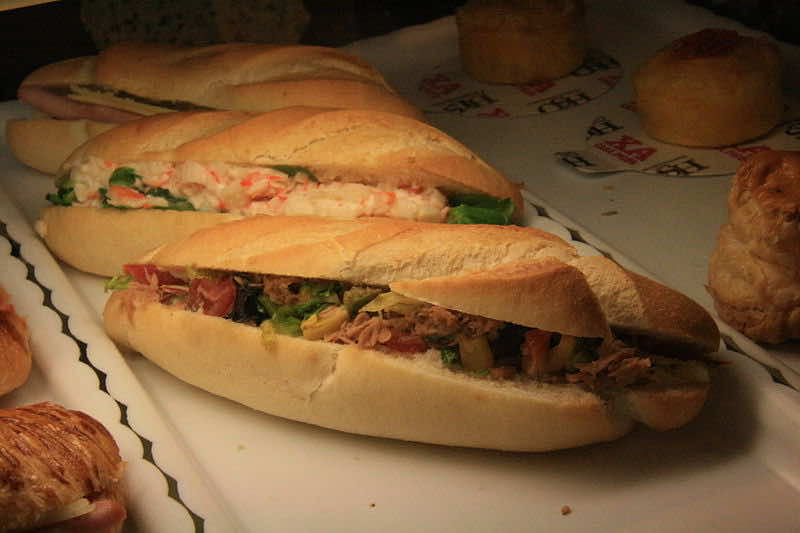
Bocadillo is a sandwich that originated in Spain. Due to colonization, the European dish became one of the most common street foods in Morocco.
The famous sandwich is usually made of either khobz, split in half, or a baguette, and its filling includes boiled eggs, tuna, olives, lettuce, and tomatoes. You can add hot sauce or any other sauce you prefer. The sandwich’s rich ingredients give it a delicious taste.
Due to its simplicity, many Moroccans pack this tasty sandwich from home for picnics or beach trips, or they buy it from sandwich shops or the many available food stalls.
Nougat
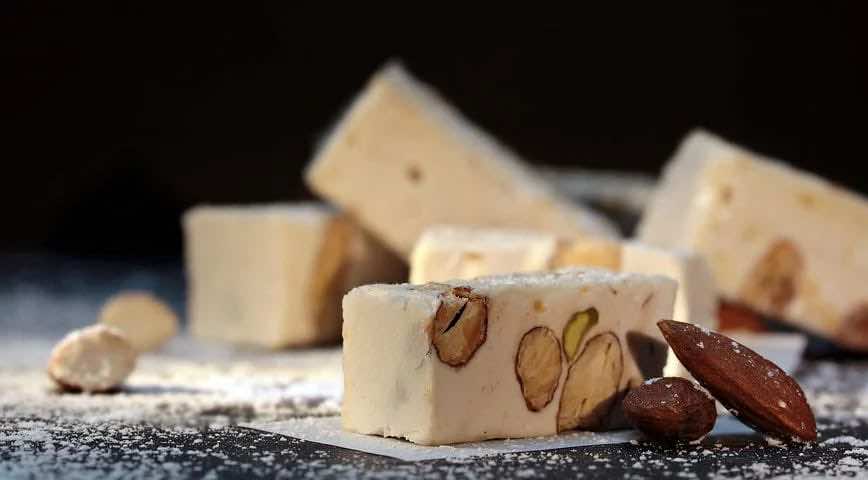
Nougat is a candy that comes in many shapes, colors, and flavors. If you visit Fez’ maze-like medina you are bound to find an abundance of colorful pyramids of nougat in food stalls on almost every corner.
The tasty dessert is made with sugar, egg whites, and different nuts. You can find walnut, almond, or peanut nougat in various colors: Pink, green, blue, yellow, black, or white.
The treat is very sweet and filling as well. It is undeniably tasty and on the street foods loved by Moroccans of all ages.
Moroccan street food is not only tasty, but it also carries a rich culture of which Moroccans are very proud and love to share.
Although many restaurants might offer these authentic Moroccan delicacies, having them in the heart of Moroccan cities in local streets and traditional medinas makes experiencing these foods even more incredible.
Source: Morocco World News.

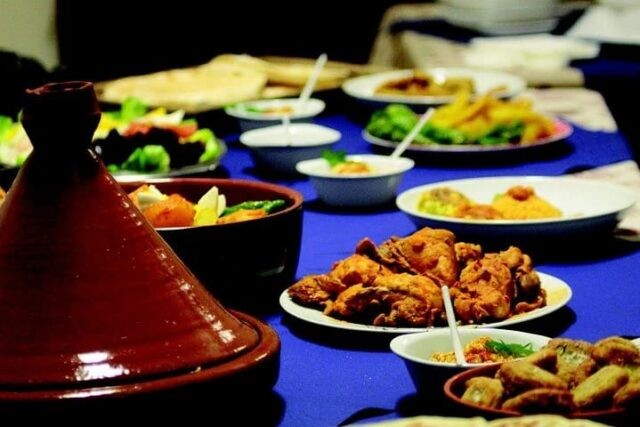
In my opinion Moroccan cuisine is the best ?